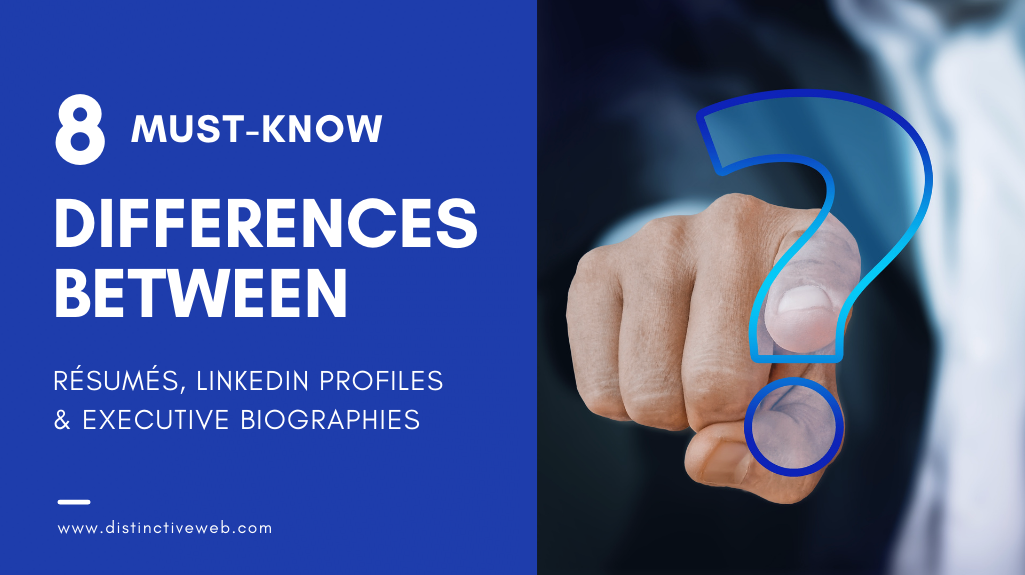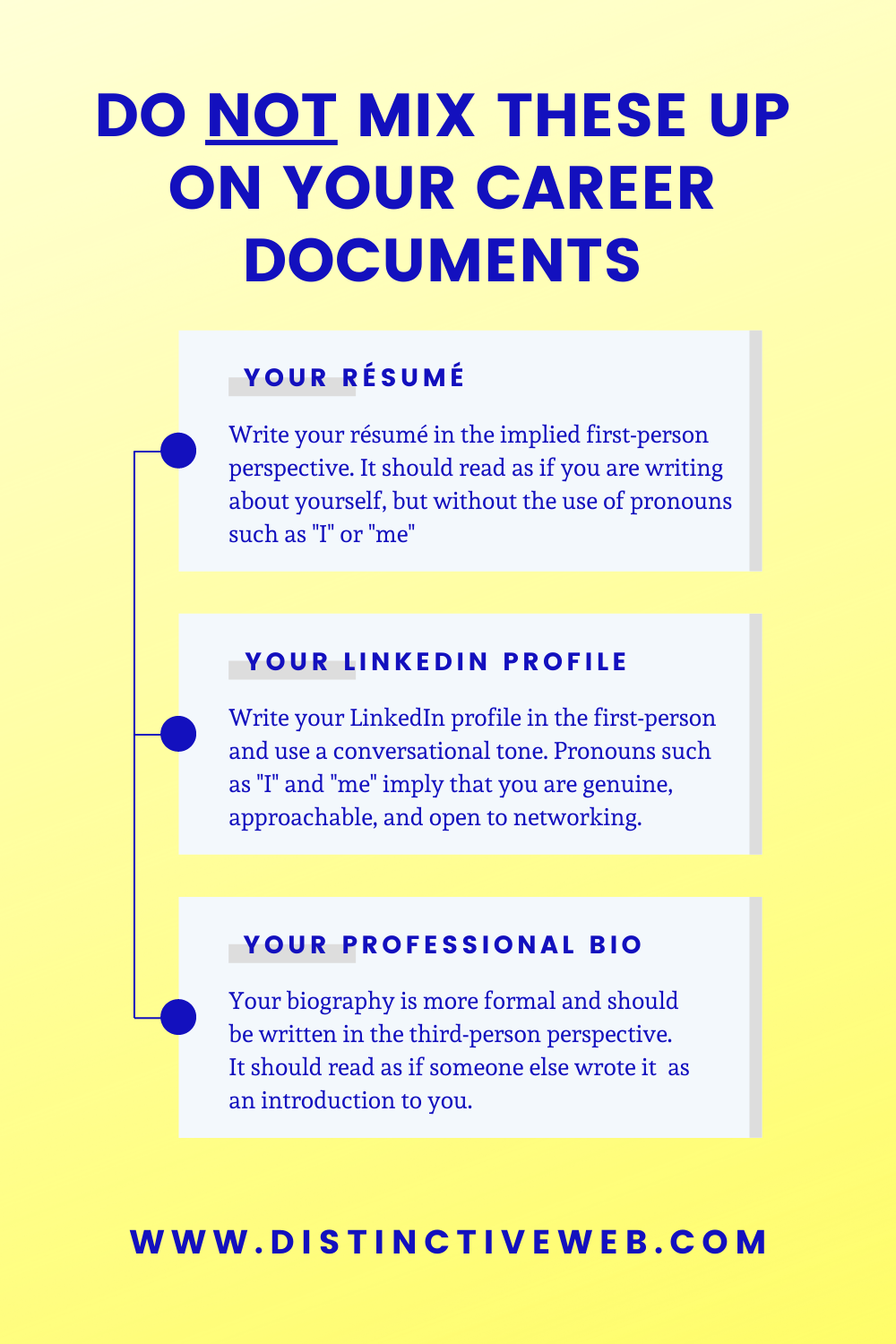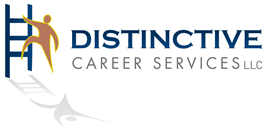
Most professionals understand the need for a professional resume. Where things get confusing is when you bring up the need for a professional bio and a LinkedIn profile. While most professionals recognize that a LinkedIn profile and bio could be helpful to them in their career, they have a hard time explaining why this is and what the difference is between these.
So, if you’ve felt similarly confused, you aren’t alone. Here then, are 8 must-know similarities and differences in a detailed comparison of resumes, bios, and LinkedIn profiles.
| Resume | LinkedIn Profile | Professional Biography |
|---|---|---|
| A detailed overview of your career and professional credentials; should be focused for a specific goal. Individual career stories should be written to illustrate your personal brand and unique value offerings. | Infused with your personal brand and personality, your LinkedIn profile helps to build connections and foster networking while providing space the create a “living” multimedia career portfolio. | Provides a birds-eye view of your career and your story in a way that shines a light on your personal brand and unique value offerings. Infused with personality but in a more formal way. |
| Written in the implied first-person (as if you are writing about yourself but without the use of any pronouns such as “I” or “me”). | Written in the first person with a conversational tone. Pronouns are both acceptable and expected as they promote you as an approachable individual open to networking. | More formal and written from third-person perspective (as if someone else is writing about you). Use your name (Jane Doe, Ms. Doe, etc.) and the subject pronouns he or she. |
| Usually organized chronologically (reverse chronology). | Organized chronologically (reverse chronology). | Organized in the order that best tells your story. This is usually reverse chronology, but not always. |
| Includes education, all (or most recent XX years) companies, all title/years for roles held, as well as responsibilities, challenges, actions taken, and results. | Includes education, all (or most recent XX years) companies, all title/years for roles held, as well as responsibilities, challenges, actions taken, and results. | High-level overview; should not include all roles, years, and dates. Should include relevant roles, companies, education, and other credentials. |
| Should include facts and specific details including metrics and data to illustrate outcomes. | Provide facts and details judiciously; in some cases, it might not be appropriate to include metrics or other details. | Illustrate your story and most important professional accomplishments with a high-level overview and very selective use of metrics, but only if they help you convey your message. |
| Two pages (and in very selective cases, three) are common and expected for most experienced candidates. | While content should be succinct and readable, a robust profile with multimedia content and complete sections will stand out. | Should almost never be more than one page. In some cases you may be asked for a bio that is just a couple of paragraphs or even just a few sentences. |
| Never include a photo of yourself (this might not always be true outside of the North American job market). | You should include a professional and on-brand photo of yourself. | You should include a professional and on-brand photo of yourself. |
| Never include information about your family and personal hobbies (unless those hobbies directly support your target goal). | A peek into your volunteer activities, community work, passions, brand values, vision and mission, and hobbies can help you build meaningful connections and can be conversation starters. Include them prudently. | A peek into your volunteer activities, community work, passions, brand values, vision and mission, and hobbies can help you build meaningful connections and can be conversation starters. Include them prudently. |
Harmonizing Professional Narratives: Your Resume vs Bio vs LinkedIn Profile
Understanding the nuanced differences and similarities between resumes, professional bios, and LinkedIn profiles is pivotal for career progression. Each of these career marketing pieces serves a unique purpose, but collectively, they paint a comprehensive picture of your personal brand and professional persona, employment history, and relevant background, aiding you in your job hunt and professional endeavors.
Unified Purpose with Diverse Execution:
Resumes, bios, and LinkedIn profiles all aim to showcase your professional journey and accomplishments. However, they differ in presentation and focus. A resume is a detailed document, often tailored for a specific job, focusing on your professional experiences and quantified achievements. In contrast, a professional bio provides a high-level overview of your career, written in a more formal and narrative style, usually from a third-person perspective. LinkedIn profiles, on the other hand, are dynamic, allowing for a conversational tone and multimedia content, making them ideal for networking purposes and building connections.
Strategic Integration of Personal Details:
Incorporating personal details is a delicate balancing act. While resumes traditionally exclude personal hobbies and family information, both bios and LinkedIn profiles can benefit from prudent inclusion of such details. Sharing volunteer activities, passions, and community work can serve as conversation starters and help build meaningful connections, reflecting your life story and personal brand values.
Optimizing Professional Visibility:
A well-crafted LinkedIn profile infused with your personality not only fosters networking but also increases your visibility to hiring managers and recruiters. Including a professional photo and maintaining an approachable tone can make you seem more relatable. LinkedIn is also a platform where showcasing your company website, if applicable, can add to your credibility and professional standing.
Employment History and Relevant Background:
All three career marketing pieces should highlight your employment history and relevant background, but the depth and focus vary. Resumes require specific details, including metrics and data to illustrate outcomes, whereas bios illustrate your story and most important professional accomplishments with a high-level overview. LinkedIn profiles, being versatile, allow for a blend, providing space for detailed experiences and achievements while also allowing for a more personal touch.
Role in Career Progression:
Each of these professional narratives plays a crucial role in career progression. A resume is often the first point of contact with potential employers, acting as a snapshot of your professional life. A compelling bio can illuminate your personal brand and unique value offerings, often swaying decisions in your favor. A robust LinkedIn profile can open doors to unforeseen opportunities and connections, acting as a continuous networking tool.
Final Thoughts:
Harmonizing your resume, professional bio, and LinkedIn profile can make all the difference in today’s competitive job market. While each serves a distinct purpose, together, they offer a multifaceted view of your professional and personal self. By understanding and leveraging their unique roles effectively, you can ensure a coherent and compelling presentation of your professional journey, enhancing your prospects in your job hunt and career development.
Remember, the strategic integration of personal details, a clear depiction of your employment history, and a well-rounded portrayal of your relevant background in your resume vs bio vs LinkedIn profile can significantly impact your professional trajectory, making you a memorable candidate in the minds of hiring managers and fostering new professional connections.

Frequently Asked Questions
What is the main difference between a resume, a bio, and a LinkedIn profile?
A resume is a detailed overview of your career and professional credentials, focused on a specific goal. A bio provides a birds-eye view of your career and your story, highlighting your personal brand and unique value offerings. A LinkedIn profile, infused with your personal brand and personality, helps to build connections and foster networking while providing space to create a “living” multimedia career portfolio.
How should I write my resume, bio, and LinkedIn profile?
Your resume should be written in the implied first-person, your LinkedIn profile should be written in the first person with a conversational tone, and your bio should be more formal and written from a third-person perspective.
How should I organize my resume, bio, and LinkedIn profile?
Both your resume and LinkedIn profile should be organized chronologically (reverse chronology), while your bio should be organized in the order that best tells your story.
What should I include in my resume, bio, and LinkedIn profile?
Your resume and LinkedIn profile should include education, all (or most recent years) companies, all title/years for roles held, as well as responsibilities, challenges, actions taken, and results. Your bio should include a high-level overview of relevant roles, companies, education, and other credentials.
Should I include a photo of myself in my resume, bio, and LinkedIn profile?
You should not include a photo of yourself in your resume, but you should include a professional and on-brand photo of yourself in both your bio and LinkedIn profile.
Can I include information about my family and personal hobbies in my resume, bio, and LinkedIn profile?
You should never include information about your family and personal hobbies in your resume, unless those hobbies directly support your target goal. However, a peek into your volunteer activities, community work, passions, brand values, vision and mission, and hobbies can help you build meaningful connections and can be conversation starters in both your bio and LinkedIn profile.
How long should my resume, bio, and LinkedIn profile be?
Two pages (and in very selective cases, three) are common and expected for most experienced candidates’ resumes. Your LinkedIn profile should be succinct and readable, with a robust profile standing out. Your bio should almost never be more than one page, and in some cases, it may be just a couple of paragraphs or even just a few sentences.









